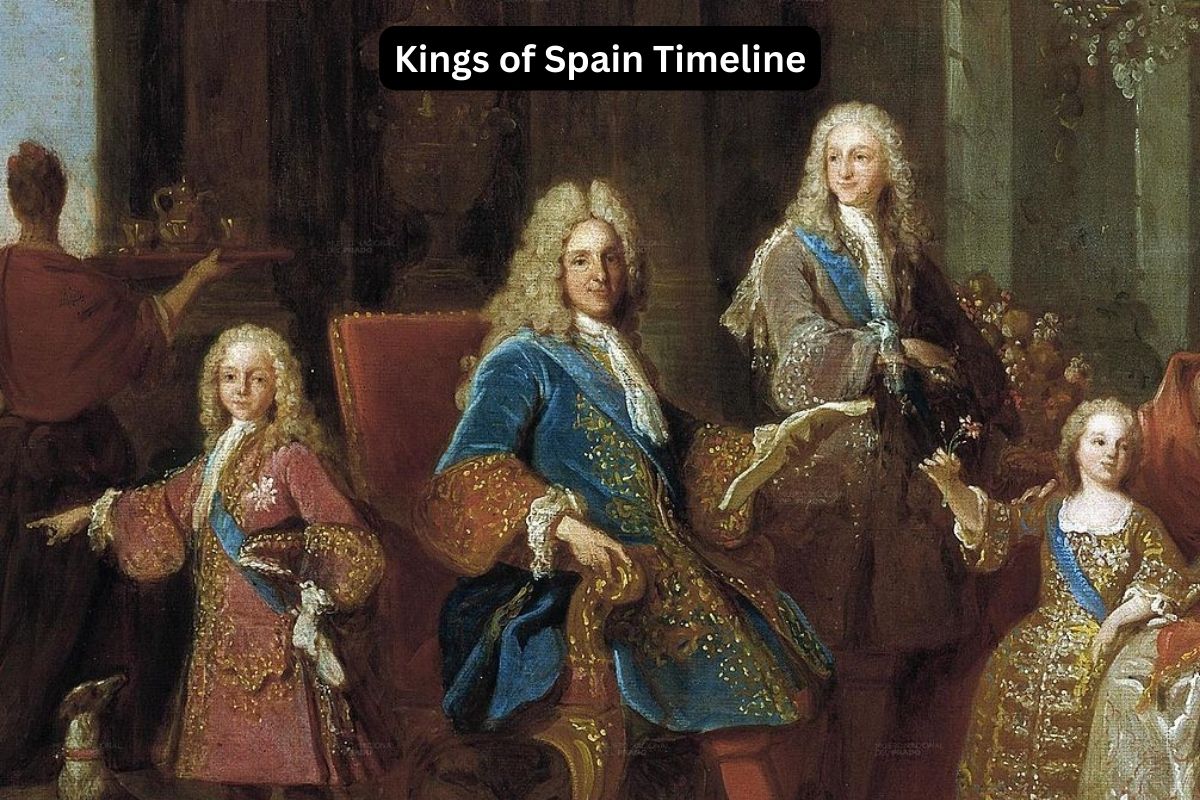From the unification of Ferdinand II of Aragon and Isabella I of Castile to the modern reign of Felipe VI, the history of Spain is deeply intertwined with its monarchy.
This article provides a concise exploration of the reigns of Spain’s kings, highlighting their contributions and the evolution of the nation.
Join us as we navigate through centuries of Spanish royalty, witnessing the triumphs and challenges that have shaped the country’s path.
| King | Reign | Notable Events/Remarks |
|---|---|---|
| Ferdinand II of Aragon and Isabella I of Castile | 1479-1516 | Initiated the unification of Spain through marriage and conquest; laid groundwork for the Spanish Empire. |
| Charles I (Charles V Holy Roman Emperor) | 1516-1556 | Inherited crowns of Castile and Aragon; expanded Spanish Empire significantly. |
| Philip II | 1556-1598 | Centralized power in Spain; expanded Spanish Empire. |
| Philip III | 1598-1621 | Faced economic decline and unrest in the Netherlands. |
| Philip IV | 1621-1665 | Height of Spain’s power and influence but also faced decline. |
| Charles II | 1665-1700 | Last Habsburg ruler of Spain; reign marked by weakness and decline. |
| Philip V | 1700-1724, 1724-1746 | First Bourbon monarch of Spain; faced succession disputes and initiated reforms. |
| Louis I | 1724 | Briefly reigned for seven months; died of smallpox. |
| Ferdinand VI | 1746-1759 | Implemented domestic reforms; stabilized Spain after War of the Spanish Succession. |
| Charles III | 1759-1788 | Known for enlightened absolutism; implemented significant reforms in governance and economy. |
| Charles IV | 1788-1808 | Reign marked by political instability and the loss of colonies. |
| Ferdinand VII | 1808, 1813-1833 | Deposed by Napoleon; restored to the throne; faced political unrest. |
| Isabella II | 1833-1868 | Reign marked by political strife, including Carlist Wars and forced abdication during the Glorious Revolution of 1868. |
| Amadeo I | 1870-1873 | Elected king but faced political turmoil and abdicated. |
| Alfonso XII | 1874-1885 | Restored stability after political unrest; son of Isabella II. |
| Alfonso XIII | 1886-1931 | Reign marked by political instability, loss of colonies, and establishment of the Second Spanish Republic. |
| Juan Carlos I | 1975-2014 | Played key role in transition to democracy; abdicated in 2014. |
| Felipe VI | 2014-present | Current reigning king; focuses on modernizing monarchy and addressing 21st-century challenges. |
Timeline of the Kings of Spain
Ferdinand II of Aragon (1479-1516)

Ferdinand II of Aragon and Isabella I of Castile, known as the Catholic Monarchs, jointly ruled over Spain from 1479 until 1516. Their marriage united the kingdoms of Castile and Aragon, marking the beginning of modern Spain.
Also Read: Spanish Monarchy Timeline
One of their most significant achievements was the conquest of Granada in 1492, which marked the completion of the Reconquista and the unification of Spain under Christian rule. They also sponsored Christopher Columbus’s voyages to the New World, which initiated Spain’s colonial expansion.
Charles I (1516-1556)

Charles I, also known as Charles V, inherited the crowns of Castile and Aragon from his maternal grandparents, Ferdinand II and Isabella I, in 1516. He was also elected Holy Roman Emperor in 1519, ruling over vast territories that included Spain, the Netherlands, parts of Italy, and the Holy Roman Empire.
Also Read: Timeline of the Queens of Spain
Charles faced numerous challenges during his reign, including conflicts with France, the Protestant Reformation, and the expansion of the Ottoman Empire. He abdicated the Spanish throne in 1556, dividing his territories between his son, Philip II, and his brother, Ferdinand I.
Philip II (1556-1598)
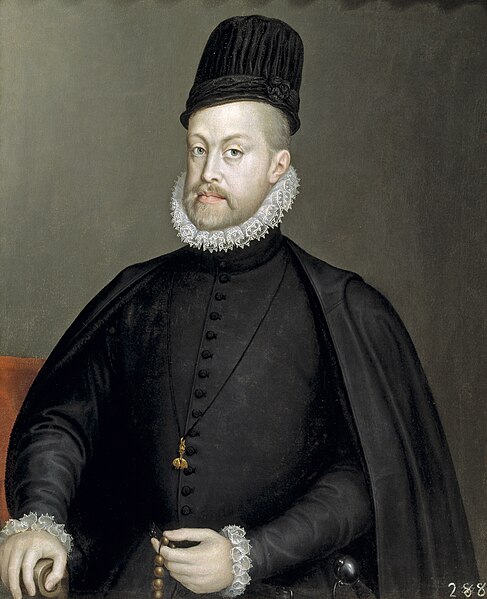
Philip II ascended to the Spanish throne in 1556, inheriting an extensive empire from his father, Charles V. His reign was characterized by a centralized and authoritarian rule.
Philip strengthened Spain’s control over its overseas territories, including significant conquests in the Americas, but also faced economic challenges due to costly wars, such as the Eighty Years’ War against the Dutch Republic and conflicts with England.
Philip’s reign saw the peak of Spain’s power and influence, but it also marked the beginning of its gradual decline as other European powers rose to prominence.
Philip III (1598-1621)
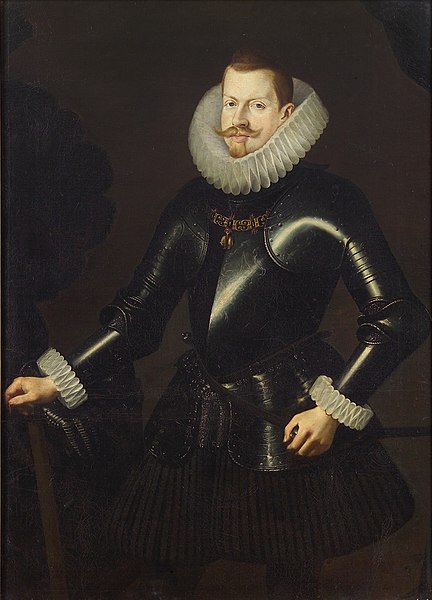
Philip III inherited the Spanish throne from his father, Philip II, in 1598. His reign was marked by economic decline and internal strife. Spain faced significant financial difficulties due to the heavy expenses of maintaining its vast empire and costly wars, such as the Eighty Years’ War in the Netherlands.
Additionally, Philip III’s rule saw increased unrest in the Spanish Netherlands, leading to a protracted conflict that drained Spanish resources and weakened the empire’s hold over its territories.
Philip IV (1621-1665)
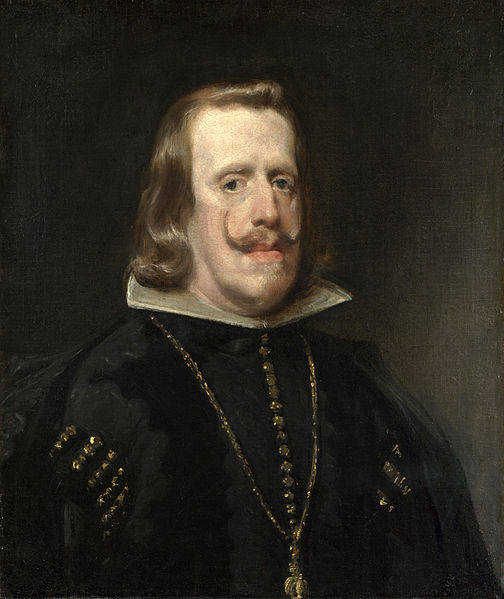
Philip IV succeeded his father, Philip III, in 1621. His reign coincided with a period of continued decline for the Spanish Empire.
While Spain remained a dominant European power at the beginning of his reign, internal weaknesses and external challenges led to further erosion of Spanish influence.
Philip IV faced numerous conflicts, including the Thirty Years’ War and the Catalan Revolt. These conflicts, coupled with economic mismanagement and declining revenues from the Americas, contributed to Spain’s diminishing power on the international stage.
Charles II (1665-1700)
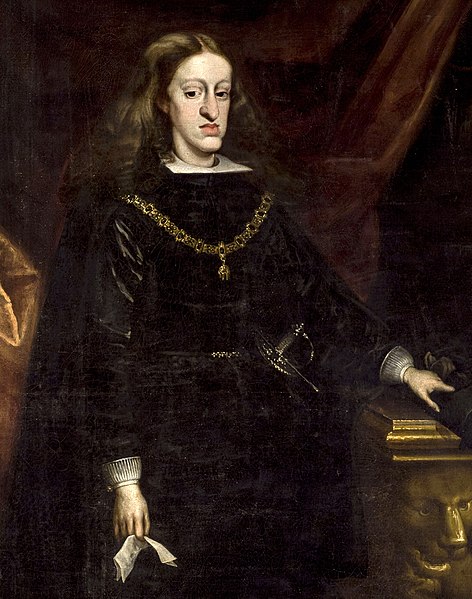
Charles II, the last Habsburg ruler of Spain, ascended to the throne in 1665 at the age of four. His reign was marked by weakness and decline, earning him the epithet “El Hechizado” (the Bewitched). Charles II’s rule was characterized by internal strife, economic stagnation, and the erosion of Spanish territories abroad.
The absence of a strong and capable ruler exacerbated Spain’s problems, leading to political instability and increasing pressure from rival European powers.
Charles II’s death without direct heirs in 1700 sparked the War of the Spanish Succession, which ultimately led to the Bourbon dynasty assuming the Spanish throne.
Philip V (1700-1724, 1724-1746)

Philip V was the first Bourbon monarch of Spain, ascending to the throne after the War of the Spanish Succession.
His reign saw significant changes in Spain’s political and social landscape. Philip V initiated reforms aimed at centralizing power and modernizing the state, including the establishment of new administrative structures and the promotion of economic development.
However, his reign was also marked by internal conflicts, such as the War of the Spanish Succession, and succession disputes, leading to his abdication in 1724 (briefly) and subsequent return to the throne.
Louis I (1724)

Louis I briefly reigned as King of Spain for only seven months in 1724. He was the son of Philip V and his first wife, Maria Luisa of Savoy. Louis I’s reign was short-lived, as he died of smallpox at the age of 17, leading to the restoration of his father, Philip V, to the throne.
Ferdinand VI (1746-1759)
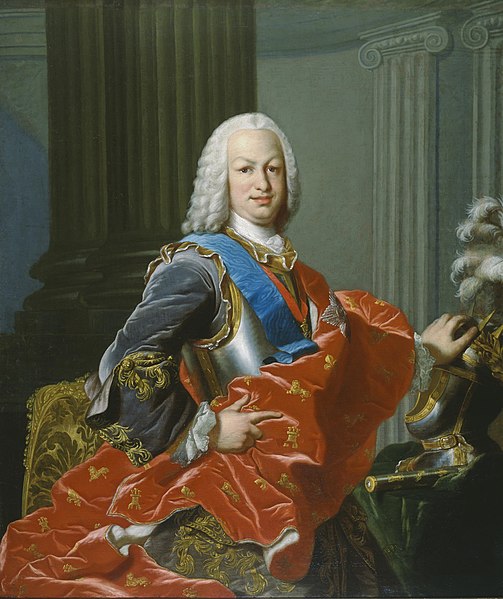
Ferdinand VI, the son of Philip V and his second wife, Elisabeth Farnese, ruled Spain from 1746 to 1759. His reign was characterized by a period of relative stability and economic prosperity.
Ferdinand VI implemented various reforms aimed at improving governance, promoting commerce and agriculture, and fostering cultural development. He sought to consolidate the reforms initiated by his father and promote a more enlightened and efficient administration.
Charles III (1759-1788)

Charles III, the son of Philip V and Elisabeth Farnese, succeeded his half-brother Ferdinand VI to the Spanish throne in 1759. His reign is often regarded as a period of significant reform and modernization in Spain.
Charles III implemented wide-ranging reforms across various sectors, including governance, finance, economy, and infrastructure. He promoted measures to stimulate economic growth, such as the encouragement of trade and industry, the modernization of agriculture, and the promotion of scientific and technological advancements.
Charles III’s reign also saw significant urban development, with the beautification of cities such as Madrid and the expansion of public services. His policies laid the foundation for Spain’s transition into a more modern and progressive state.
Charles IV (1788-1808)

Charles IV, son of Charles III, ascended to the Spanish throne in 1788. His reign was marked by political instability, economic crisis, and the erosion of Spanish power. Charles IV’s rule was characterized by the influence of his minister, Manuel Godoy, whose policies were often unpopular and ineffective.
The Napoleonic Wars further weakened Spain, and the French invasion of the Iberian Peninsula led to the abdication of Charles IV in favor of his son, Ferdinand VII, during the events of the Peninsular War.
Ferdinand VII (1808, 1813-1833)

Ferdinand VII’s reign was marked by turmoil and conflict, particularly during the Napoleonic era. He initially ascended to the throne in 1808 but was soon forced to abdicate by Napoleon Bonaparte, who installed his brother, Joseph Bonaparte, as king of Spain.
This sparked the Peninsular War, during which Ferdinand VII’s supporters fought against French occupation forces. After Napoleon’s defeat, Ferdinand VII was restored to the throne in 1813.
However, his subsequent rule was marked by absolutism, repression, and resistance to liberal reforms, leading to political unrest and several uprisings across Spain.
Isabella II (1833-1868)
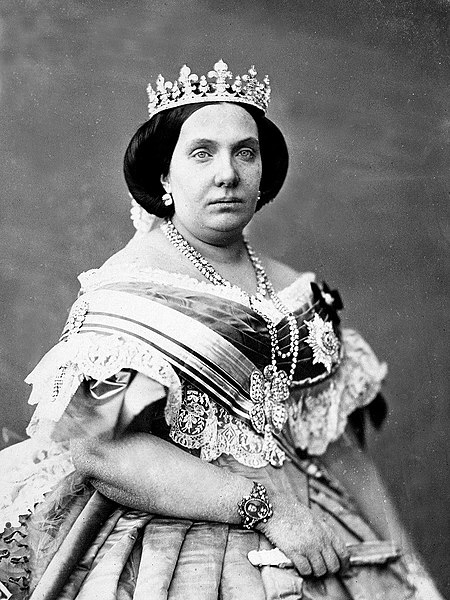
Isabella II became queen of Spain at the age of three upon the death of her father, Ferdinand VII, in 1833. Her reign was marked by political instability, social unrest, and frequent military interventions.
Isabella II’s rule coincided with a period of liberal reforms and conservative backlash, leading to conflicts such as the Carlist Wars, which pitted supporters of Isabella against those of her uncle, Carlos María Isidro, who contested her right to the throne.
Isabella II’s reign ended with the Glorious Revolution of 1868, which forced her into exile and led to the establishment of the First Spanish Republic.
Amadeo I (1870-1873)

Amadeo I of Savoy was elected as king of Spain by the Cortes (parliament) in 1870 following the overthrow of Isabella II and the establishment of the First Spanish Republic.
His brief reign was marked by political turmoil, including conflicts between republicans, liberals, and conservatives, as well as challenges from Carlist supporters.
Facing widespread opposition and unable to effectively govern, Amadeo I abdicated the throne in 1873, leading to the proclamation of the First Spanish Republic.
Alfonso XII (1874-1885)

Alfonso XII ascended to the Spanish throne in 1874 following the abdication of Amadeo I and the collapse of the First Spanish Republic. His reign was characterized by efforts to restore stability and unity to Spain after a period of political turmoil.
Alfonso XII pursued a policy of conciliation between different political factions and played a key role in reconciling the divisions between Carlists, liberals, and conservatives. His reign saw the establishment of a constitutional monarchy and the implementation of political reforms aimed at modernizing Spain’s institutions.
Alfonso XIII (1886-1931)

Alfonso XIII became king of Spain upon the death of his father, Alfonso XII, in 1885. His reign was marked by significant political upheaval, social unrest, and military conflicts.
Alfonso XIII faced challenges such as the loss of Spain’s colonies in the Spanish-American War of 1898, the rise of republican and socialist movements, and the outbreak of World War I.
His support for the military dictatorship of Miguel Primo de Rivera in the 1920s ultimately led to his loss of popularity and the establishment of the Second Spanish Republic in 1931, forcing him into exile.
Juan Carlos I (1975-2014)

Juan Carlos I became king of Spain in 1975 following the death of dictator Francisco Franco and the restoration of democracy. He played a crucial role in the transition from dictatorship to democracy, overseeing the drafting of a new constitution and supporting democratic reforms.
Juan Carlos I’s reign saw Spain’s emergence as a modern European democracy and its integration into the European Union. However, his later years were marred by scandals and controversies, leading to his abdication in 2014 amidst declining popularity.
Felipe VI (2014-present)

Felipe VI succeeded his father, Juan Carlos I, as king of Spain in 2014. His reign has been focused on modernizing the monarchy and addressing contemporary challenges facing Spain.
Felipe VI has sought to enhance the transparency and accountability of the monarchy, while also representing Spain on the international stage and promoting national unity.
He has faced challenges such as the Catalan independence movement and political instability, but continues to fulfill his role as head of state with the support of the Spanish people.
